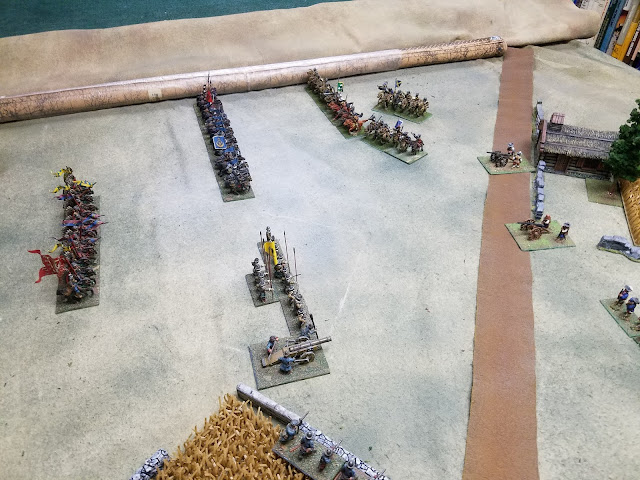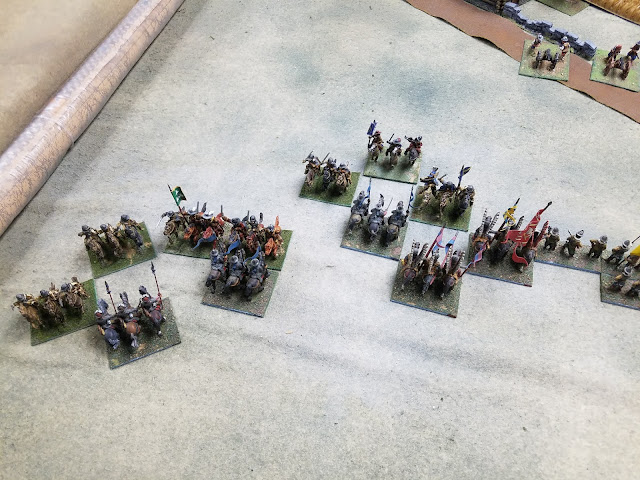Recently we did another DBA24 game in 28mm, this time a late Renaissance battle between armies we haven't used before, Poles & Swedes, in a Thirty Years War period contest. We came up with some house rules for the game to represent the Renaissance period, including allowing pistol armed cavalry to shoot 1 BW, etc. We borrowed a few of the rules, element types, and combat factors from DBR.
The Polish army deployed near a farm.
Another view. The Poles defend the garden wall of the farm, with a Polish element recoiling from Swedish shooting.
The far flank forces are fully deployed in line against one another.
The far flank forces fully engaged. The Poles have supporting shot & pikes nearby on the right, and a group of Winged Hussars in reserve.
After a couple turns, the Swedish horse begins to dominate the Poles, turning their left flank and inflicting casualties that have created gaps in the line.
The Swedes close for the kill.
The Poles lose another Winged Hussar element (which were treated as Knights in our game). The impetuosity (mandatory pursuit) of the Winged Hussars was not helpful in this game.
Another Polish horse element lost. The Poles are now 1 element away from breaking. They manage to kill a Swedish horse element with a flanking shot element supporting the Winged Hussars.
The Poles lose an infantry element in the field to shooting, which brings their losses to 8, and thus the end of the game for a Swedish victory.


















No comments:
Post a Comment